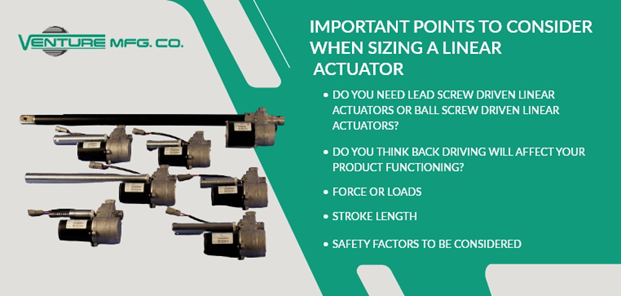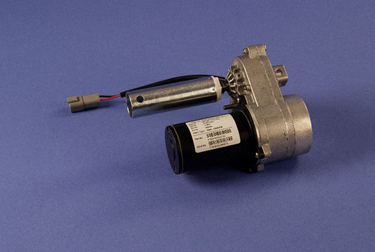Linear actuators facilitate linear or rotational motion in industrial and commercial equipment. With such an important role to play, they must be chosen carefully. The size of the actuator is one of the essential considerations to make. Several mechanical and electrical factors must be kept in mind when choosing an actuator of the right size. This post guides you through some essential factors that would help you make the linear actuator of the correct size.
Important Pointers on Sizing a Linear Actuator Answered
The following are important points to consider when sizing a linear actuator.
-
Do you need lead screw driven linear actuators or ball screw driven linear actuators?
Most linear actuators feature ball screw or acme lead screw drive mechanisms. You can choose the best option based on your application requirements. The following pointers on these screw types will help you make a quick decision.- Ball Screws: They are a good choice for applications requiring high load ratings. You can use them for dynamic and high static loads and applications demanding high accuracy in repetition and positioning.
- Acme Lead Screws: These actuators are good for medium to small load ratings. They possess excellent high traveling speeds. You can do performance optimization depending on the coating used on them.
-
Do you think back driving will affect your product functioning?
Actuators with high efficiency may face back driving. Generally, back driving is observed in ball screw linear actuators due to their high efficiency. This back driving is caused when the load pushes axially on the nut or screw to produce rotary motion. Ball screw actuators can be fitted with brakes to avoid back driving. Some applications may require back driving, and in such cases, you can use a ball screw actuators without brakes or acme lead screws with higher lead angles.. Many acme lead screw linear actuators are self-locking. They help reduce costs on brakes required to avoid back driving
-
Force or Loads:
Most linear actuators are defined by two types of loads – static and dynamic. Most linear actuators will have a higher static load rating the dynamic load rating. Some linear actuators may have different load ratings for pushing and pulling.- Dynamic load rating is the maximum thrust load required to move an object to the desired position. This thrust load is applied to the nut assembly and the lead screw while it’s in motion
- Static load is the maximum load that an actuator can hold when it is not in motion. This is quite an important consideration in applications where the equipment is required to hold a large load when not moving. For example, the sit and stand desk.
-
Stroke Length:
The actuator size may differ based on the stroke length. This is the distance covered by the object fitted with a linear actuator.
-
Safety Factors to be Considered:
Reading a load rating will help you understand the safety factor of the linear actuator. This factor is usually kept at 2 or 1.5 and varies across applications. The following are a few safety factors to be addressed when designing the load rating.- Maximum speed and a load of the actuator
- Duty cycle of the actuator
- High or low speeds of linear actuator operated at higher loads
The above mentioned are only a few basic steps for sizing and selecting the linear actuator; however, you need to make much larger and more detailed considerations. If you have been considering them for your application, ensure to partner with experienced and trusted linear actuator manufacturer like Venture Manufacturing. Since its inception, the company has delivered customized linear actuators, including ball screw driven linear actuators and acme lead screw driven linear actuators to clients across industries. The experts at the company work closely with clients to understand their requirements before offering them solutions. This client-centric approach has helped them deliver quality linear actuators that meet specific needs and offers them immense success.


